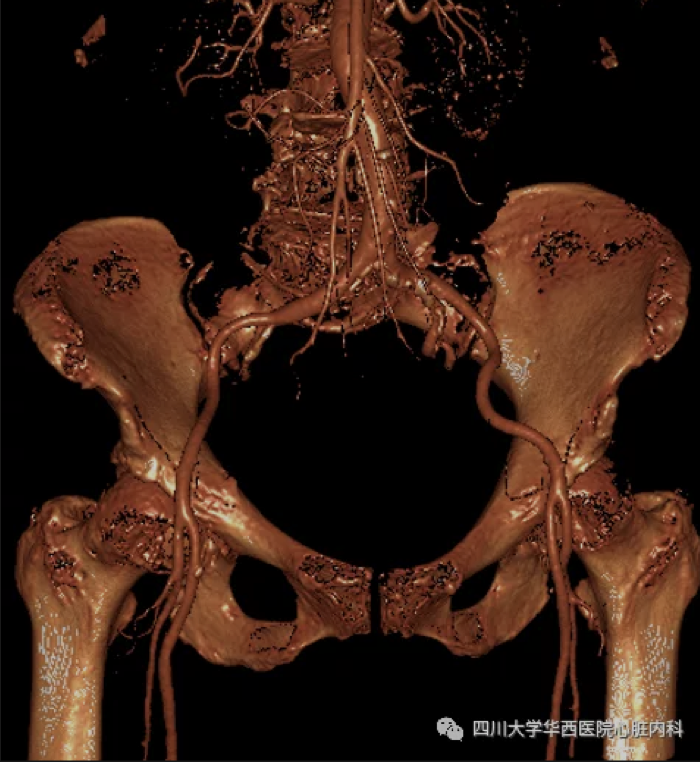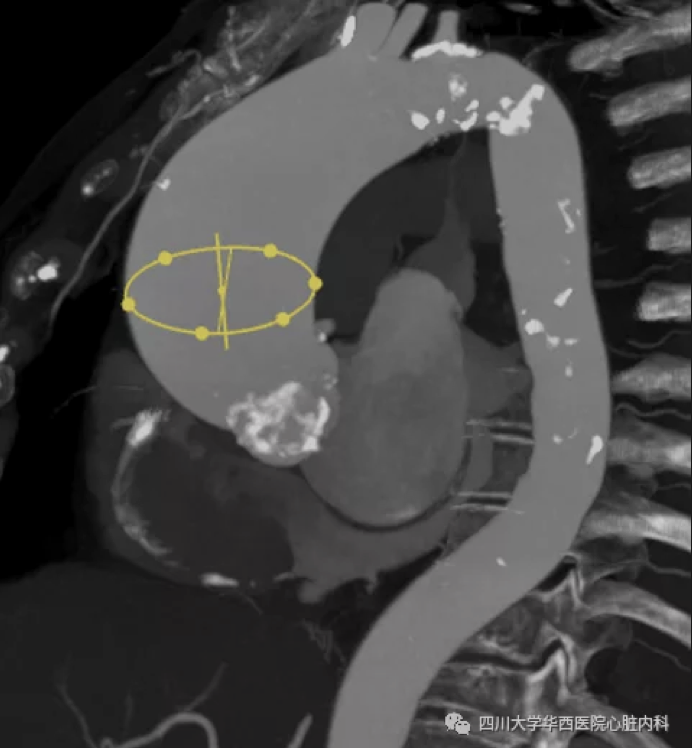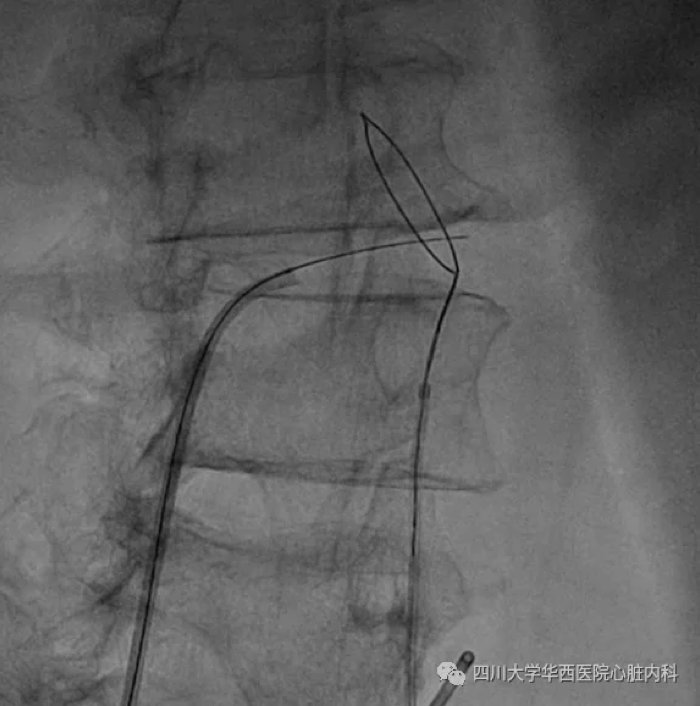Prof. Chen Mao's Team from West China Hospital Successfully Performed the First Transcaval Access TAVR in China

Open the phone and scan
Recently, a team led Prof. Chen Mao and Prof. Feng Yuan from the Department of Cardiology at West China Hospital of Sichuan University successfully performed the first transcaval access transcatheter aortic valve replacement (TAVR) in China for an 81-year-old patient. Thanks to thorough preoperative preparation and detailed surgical planning, the procedure went smoothly and the patient recovered well and was discharged one week after the surgery.
The patient was an 81-year-old woman who was admitted to the hospital with “recurrent shortness of breath with activity for 5 years, aggravated for 1 month”. The preoperative cardiac ultrasound showed aortic stenosis (very severe) with regurgitation (mild), tricuspid regurgitation (moderate), and aneurysmal dilatation of the ascending aorta. The STS score was 8.9%, suggesting she was a high-risk patient for conventional thoracic surgery, so cardiac and vascular CT scans were arranged to further assess the feasibility of TAVR.


After careful analysis and discussion by the TAVR team, they concluded that the peripheral arteries of the patient were small and TAVR via femoral artery, subclavian artery or carotid artery was not feasible. Meanwhile, due to the aneurysmal dilatation of the ascending aorta, TAVR via ascending aorta was extremely risky. However, transcaval access TAVR was a feasible option. Therefore, the team decided to establish a surgical access through the vena cava to the abdominal aorta and performed TAVR using the Prizvalve’s ball-expandable transcatheter aortic valve system.
The patient was under general anesthesia and intubated during the operation. The first step was to simultaneously image the inferior vena cava and abdominal aorta to precisely locate the target puncture site. A microcatheter fed in through the right femoral vein and a 0.014-inch guidewire formed a puncture system which attached to an electrotome. The guidewire penetrated smoothly through the wall of the vena cava and the wall of the abdominal aorta to reach the abdominal aorta. Then the snare captured the tip of the guidewire to establish the vena cava-abdominal aorta access.

After exchanging the 0.014-inch guidewire for an ultra-rigid guidewire, a 22F sheath was placed in to reach the abdominal aorta. The subsequent TAVR steps were similar to conventional transfemoral TAVR: successively conducting aortic root angiography, crossing the aortic valve with the guidewire and exchanging pigtail catheter, placing temporary pacemaker electrode via the left femoral vein, pre-dilating the aortic valve balloon and implanting the transcatheter aortic valve under rapid pacing.
The final angiogram showed a well-positioned prosthetic valve with no significant central regurgitation or perivalvular regurgitation, and no obvious signs of aortic injury in the ascending aorta, aortic arch, or descending aorta.

Postoperative aortic root angiography
After valve placement, the 22F delivery sheath was removed and the arteriovenous fistula between the abdominal aorta and the inferior vena cava was blocked with a blocker. And after the blocker was fully released, the angiogram of both the abdominal aorta and the inferior vena cava showed great blocking effect with no significant extravasation of contrast agent.
After the surgery, the patient recovered well with no serious complications. The postoperative CT scan showed that the fistula between the abdominal aorta and the inferior vena cava was completely occluded without significant retroperitoneal hematoma, and the patient was discharged one week after the operation.
TAVR has become the mainstream treatment for aortic valve stenosis in the elderly. In recent years, the transcaval access TAVR has been reported internationally to provide a new option for patients who are not suitable for transarterial or transapical TAVR. However, the transcaval access TAVR is a relatively complex procedure that requires high demand of technical skill and cooperation from the surgical team, and therefore it has been slow to be performed in China.
The Department of Cardiology of West China Hospital of Sichuan University is one of the largest TAVR centers in China. Since the successful performance of the first TAVR in the western China in April 2012, the center has performed more than 1,300 TAVR procedures, and hence accumulated rich experience in the interventional treatment of aortic valve diseases. The successful performance of the first transcaval access TAVR in China marked a new stage of the technical level of the center.


